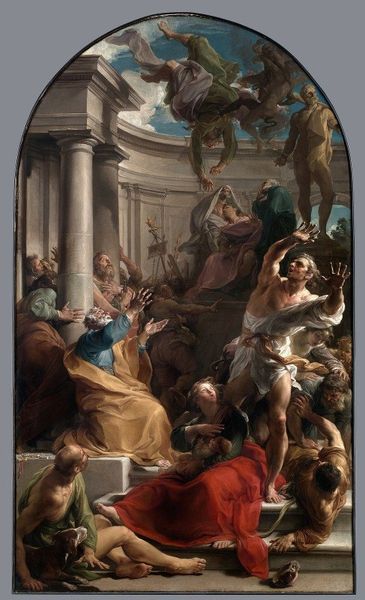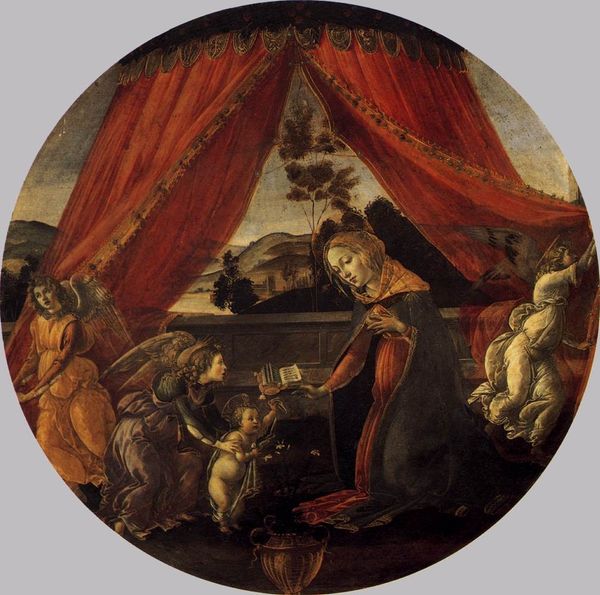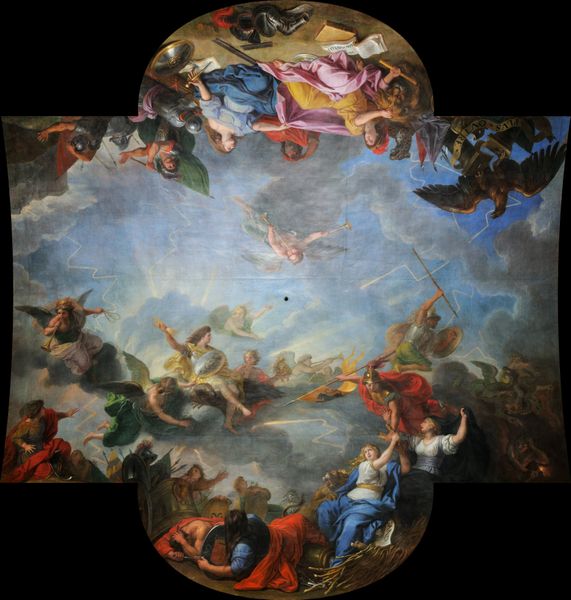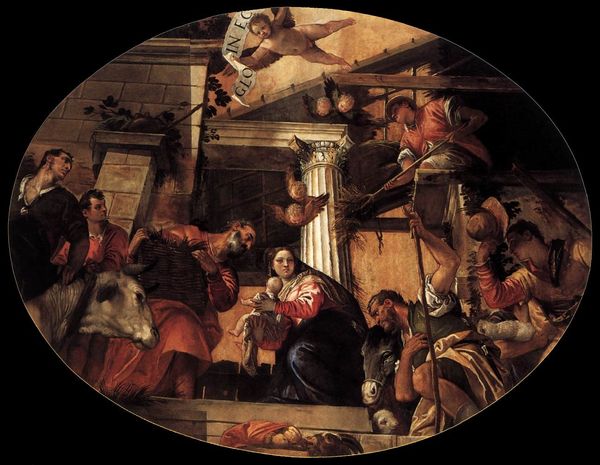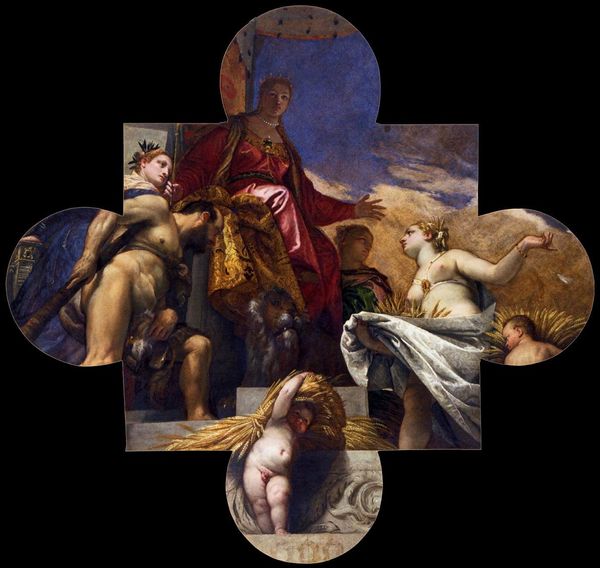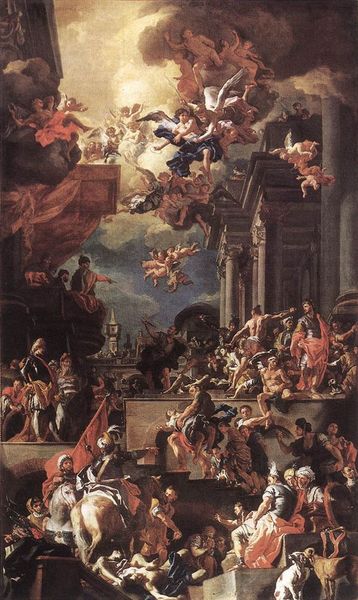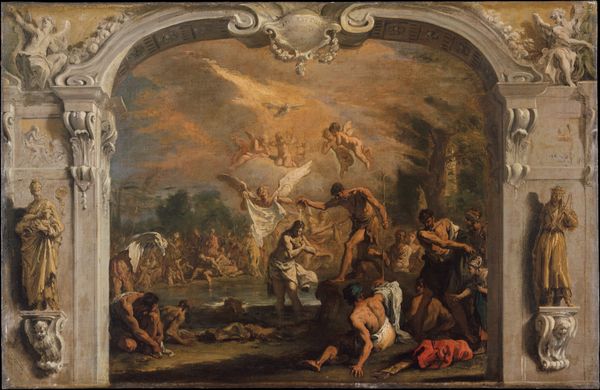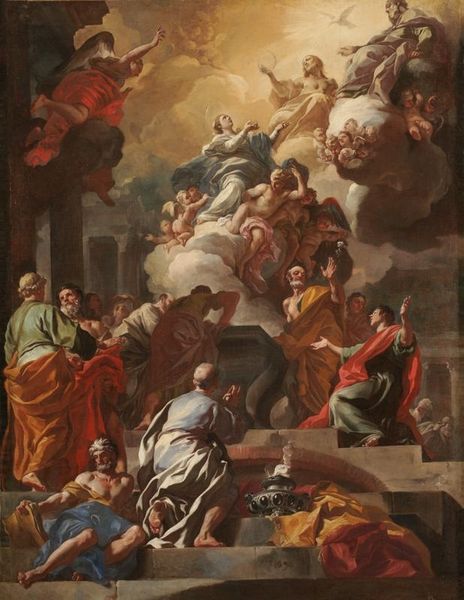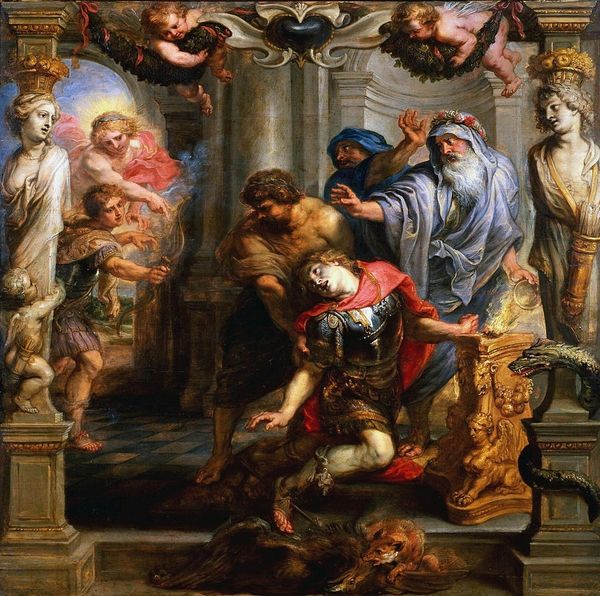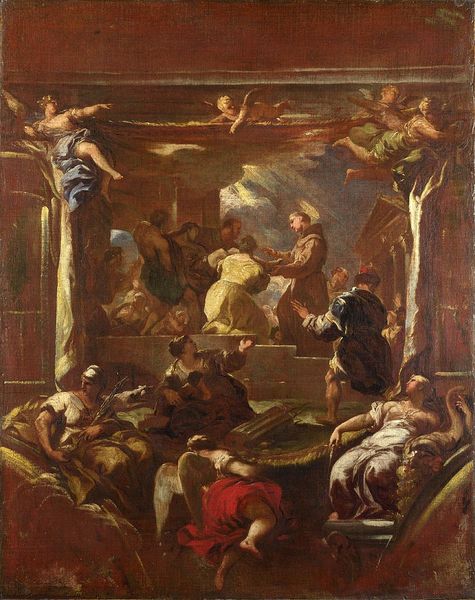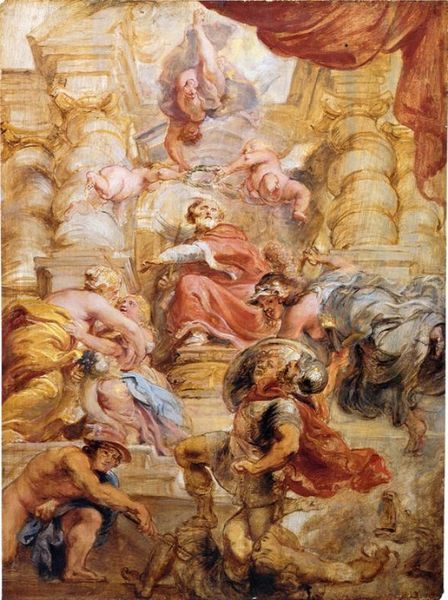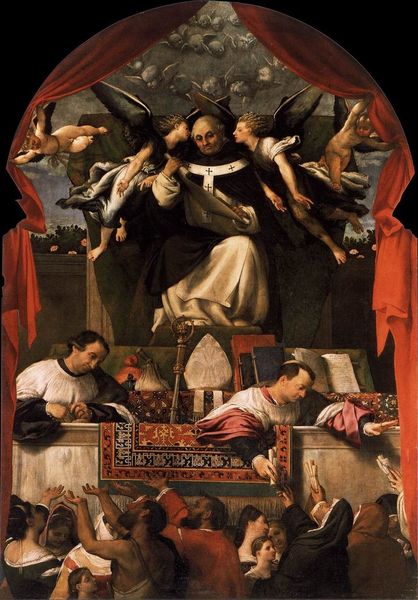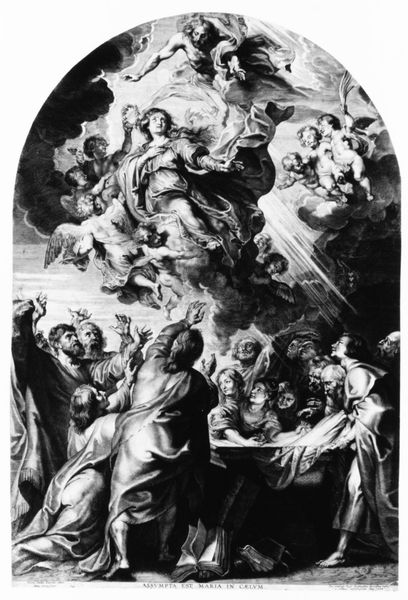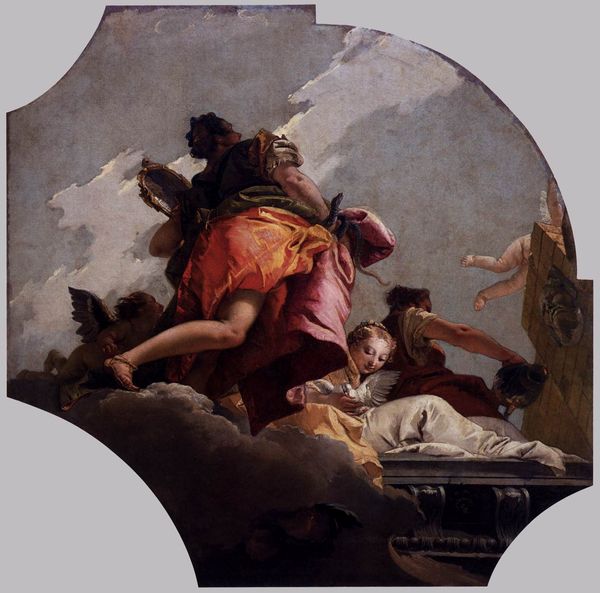
Adoration of the Magi 1582
0:00
0:00
paoloveronese
Basilica dei Santi Giovanni e Paolo (San Zanipolo), Venice, Italy
painting, oil-paint
#
portrait
#
venetian-painting
#
painting
#
oil-paint
#
sculpture
#
figuration
#
child
#
christianity
#
human
#
history-painting
#
italian-renaissance
#
christ
Copyright: Public domain
Editor: Here we have Paolo Veronese's "Adoration of the Magi" from 1582, an oil painting located in Venice. The vibrant colours and the sheer number of figures are immediately striking! How do you see this piece operating within its historical context? Curator: It's impossible to look at Veronese without considering Venice’s socio-political climate. Think about it: Venice in the late 16th century was a major mercantile power, a crossroads of cultures. The opulent textures and theatrical arrangement, beyond just illustrating a biblical story, reflect the city's own self-image – wealthy, cosmopolitan, and divinely favored. Look at how Veronese incorporates elements of contemporary Venetian society into the scene. The richly dressed Magi, wouldn't you agree they could be prominent Venetian merchants? Editor: Absolutely! The incorporation of what seems to be every-day clothing and people is pretty blatant. Does that decision say anything about the painting's intended audience, or perhaps about Venice's perception of itself in relation to the world beyond it? Curator: Precisely! Paintings like this, displayed in public spaces like the Basilica, weren't just for religious edification. They served a political function. The conspicuous wealth served to broadcast Venetian power, connecting the city to the sacred narrative and legitimizing its prosperity. Think of it as visual propaganda – reinforcing social hierarchies and promoting a particular Venetian identity on both a local and international stage. And does the sheer abundance of characters give this art piece a particularly busy impression? Editor: It really does. It's almost overwhelming, the composition that is, but interesting when considering this element as a vehicle to reinforce power structures. I never considered this, that Venice itself can be an active protagonist in the narrative of Renaissance art. Curator: That is it precisely. Always consider what voices a work amplifies, or silences. With a piece like this we discover that Veronese, deliberately or otherwise, has made a definitive and lasting statement about Venetian life. Editor: I'll keep this approach in mind! Thank you for showing the importance of historical context when studying art.
Comments
No comments
Be the first to comment and join the conversation on the ultimate creative platform.
